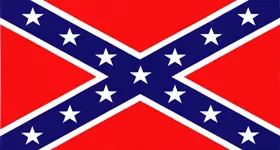Civil War Battles |
Colonial Wars |
American Wars |
Link To This Page — Contact Us —
The Battle of Bayou Bourbeau
November 3, 1863 in Bayou Boubeau, Louisiana
Texas Overland Expedition
Union Forces Commanded by:
Maj. Gen. William B. Franklin
Confederate Forces Commanded by: Maj. Gen. Richard Taylor
**Missing and Captured Conclusion: Confederate Victory |
 |
BATTLE SUMMARY
His Inglorious repulse at Sabine Pass on September 8th, forced Maj. Gen,Nathaniel P. Banks to give up his plan of an amphibious invasion of Texas. From his headquarters in New Orleans, the commander of the Army of the Gulf eventually decided on a land movement as a prelude to invasion. He would send his subordinate, Maj. Gen. William B. Franklin, with the majority of the XIII and XIX Corps, from southern Louisiana up bayou Teche to Lafayette (Vermillionville) and from there westward into Texas.
The drive got under way in early October, when Franklin led 2 divisions of his own XIX Corps out of Fort Bisland, on the lower Teche, toward the village of Opelousas. Simultaneously, Maj. Gen. Cadwallader C. Washburn, with the XIII Corps divisions of Maj. Gens. Michael K. Lawler and George F. McGinnis and Brig. Gen. Stephen G. Burbridge, left Berwick, Louisiana, southeast of Bisland, and also marched north. Washburn joined Franklin on the 14th at bayou Carrion Crow, giving the expedition 19,500 troops with which to oppose the local enemy, about half as many Confederates under Maj. Gen. Richard Taylor, commander of the District of Western Louisiana.
With his numerical advantage, it was no chore for Maj. Gen. William B. Franklin to push the Confederates before him as he moved toward the upper Teche in Louisiana. After occupying the Opelousas vincinity, the Union leader found local bayous too dangerous to cross, too difficult for his troops to forage, and rain-drenched roads too muddy to travel. By October 26, he had given up the offensive, retracing his steps toward New Iberia. Maj. Gen. Richard Taylor's small army pressed him, but Franklin worried so little about his enemy's attentions that he allowed his divisions to march and encamp far from each other. By November 3, they were scattered over a wide area, with part of the XIII Corps holding a rear guard position near Grand Coteau, on Bayou Bourdeau.
Here was the opening Taylor had sought. Just before noon, his advance echelon, 2 divisions of cavalry and 3 infantry regiments under Brig. Gen. Thomas Green, attacked the camp of Brig. Gen. Stephen G. Burbridge's division, the most exposed command. Union sentinels were so lax that the Confederates charged out of a ravine into Burbridge's front and flanks before he could deploy. From his position in the rear, Maj. Gen. Cadwallader C. Washburn rode to the scene, only to discover that many of the troops had broken and were scattered over the field, and the utter destruction or capture of the whole force seemed imminent.
Burbridge tried to fight his way out. Directing his attention to the single cavalry brigade and the infantry assailing his front and right, he entrusted the defense of his other flank (threatened by the rest of Green's cavalry) to Lt. Col. Theodore Buehler, the commander of his 67th Indiana. Through what Washburn later called "incompetency or cowardice", Buehler failed to take action till too late; eventually surrounded, he surrendered his regiment en masse to the cavalry. Finding his left "totally gone", Burbridge ordered a retreat. Many of his men had started without him, fleeing 3 miles to the safety of Gen. McGinnis' camp.
With the assistance of that division, Burbridge re-formed and stood firm. Fighting vigorously but not making further headway, Green finally drew off, having killed 25, wounded 129, and captured 562 men and one 10 lb. cannon. The day after this galling defeat, the Federals resumed their withdrawal, but with more caution and a healthier regard for Confederate strength, savvy, and opportunism.
